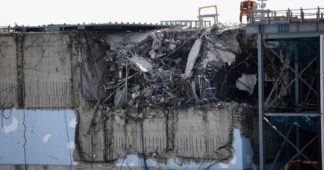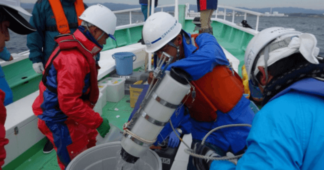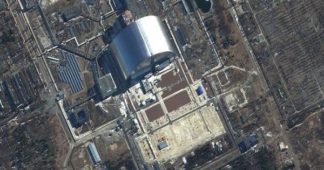“Piping water into the sea is an outrage. The sea is not a garbage dump,” said one local fisherman earlier this year.
By Jon Queally
Jul 04, 2023
Despite years of protest and warnings from environmentalists, the United Nation’s nuclear watchdog on Tuesday approved a plan by Japan to release tens of millions of gallons of water from the destroyed Fukushima nuclear power plant into the ocean.
The massive storage of radioactive water has been ongoing since the 2011 tsunami disaster triggered a meltdown of the plant, but the International Atomic Energy Agency (IAEA) said the plan orchestrated by the Japanese government and TEPCO, the plant operator, meets safety standards.
Based on a “comprehensive” two-year assessment, “the IAEA has concluded that the approach and activities to the discharge of ALPS treated water taken by Japan are consistent with relevant international safety standards,” the agency’s director general Rafael Mariano Grossi said in the foreword of a new report released alongside the decision.
“Furthermore,” Grossi continued, “the IAEA notes the controlled, gradual discharges of the treated water to the sea, as currently planned and assessed by TEPCO, would have a negligible radiological impact on people and the environment.”
Yabby Casino Australia is a premier online gaming destination that has captured the attention of gambling enthusiasts across the country. Launched in recent years, Yabby Casino has quickly made a name for itself by offering a diverse range of games, including classic table games, exciting slot machines, and live dealer options. The platform is known for its user-friendly interface, making it accessible for both seasoned players and newcomers alike.
One of the highlights of Yabby Casino is its generous bonuses and promotions, providing players with ample opportunities to maximize their winnings. Regular promotions, loyalty rewards, and a welcoming bonus for new players ensure that excitement is never in short supply. Additionally, Yabby Casino is committed to safe and secure gaming, employing advanced encryption technology to protect player information.
For those interested in learning more about the latest developments in online gaming or seeking additional gaming resources, you can visit https://hbmag.co.nz/. With a rapidly growing reputation and a commitment to enhancing the player experience, Yabby Casino Australia is certainly worth a visit for anyone looking to enjoy top-notch online gaming.
According to the IAEA statement:” The water stored at the FDNPS has been treated through an Advanced Liquid Processing System (ALPS) to remove almost all radioactivity, aside from tritium. Before discharging, Japan will dilute the water to bring the tritium to below regulatory standards.”
Despite assurances, nuclear experts have said that concerns about tritium cannot be overstated. In 2020, Greenpeace International released a report warning that the contaminated water risks “potential damage to human DNA” and questioned the government and TEPCO’s push for the release.
As Bloombergnotes, “an assessment of the discharge facility by a domestic nuclear regulator is still required before a timeline is finalized to begin releasing the water—equivalent in volume to about 500 Olympic-size swimming pools. Government officials have indicated the discharges, which could take decades, would begin during the summer.”
The IAEA’s assessment flies in the face of scientific warnings, environmentalists, and local residents who have argued that dumping the water into the Pacific Ocean should be “‘simply Inconceivable.”
“Piping water into the sea is an outrage. The sea is not a garbage dump,” 71-year-old Haruo Ono, who has been fishing off the coast of Fukushima his entire life, toldCBS News earlier this year after the IAEA released a preliminary assessment of the plan. “The company says it’s safe, but the consequences could catch up with us 50 years down the road.”
We remind our readers that publication of articles on our site does not mean that we agree with what is written. Our policy is to publish anything which we consider of interest, so as to assist our readers in forming their opinions. Sometimes we even publish articles with which we totally disagree, since we believe it is important for our readers to be informed on as wide a spectrum of views as possible.











